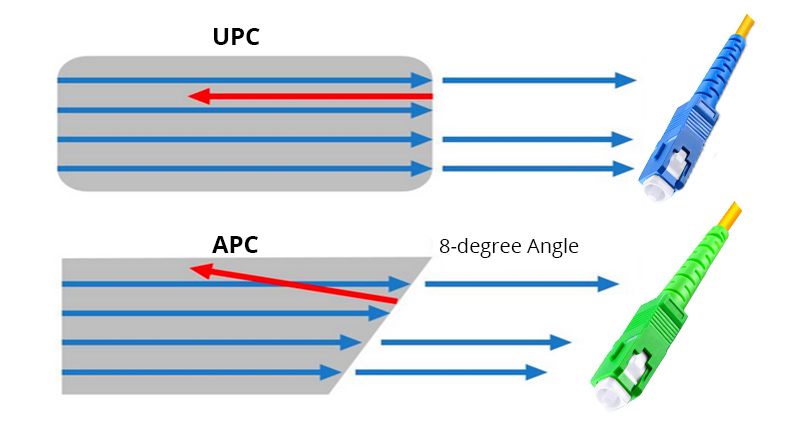Fiber optic cables have become increasingly popular for their high bandwidth and reliability. However, to get the most out of these cables, it’s crucial to choose the right connectors. There are two common types of connectors: APC and UPC.
APC (Angled Physical Contact) and UPC (Ultra Physical Contact) connectors may look similar, but there’s a crucial difference. APC connectors have a small angle of about 8 degrees on the fiber ends, while UPC connectors have a straight angle.
The angle difference affects the reflection of light in the fiber. With APC connectors, the light that bounces back from the connector is better attenuated than with UPC connectors. This is because the angle bends the reflected light away from the source, preventing it from returning to the light source. This results in better signal transmission and less signal loss.
APC connectors are typically used in applications that require high signal strength and reliable connections, such as telecommunications and CATV networks. In contrast, UPC connectors are more commonly used in LAN networks and data centers, where signal strength is less critical.

It’s essential to know which type of connector you need for your application to ensure the best performance and reliability. When in doubt, it’s always best to seek professional advice before purchasing connectors.
In summary, the difference between APC and UPC connectors lies in the angle of the fiber ends. APC connectors have a small angle, which deflects the reflected light away from the source, resulting in better signal transmission and less signal loss. APC connectors are typically used in applications that require high signal strength and reliable connections, while UPC connectors are more commonly used in LAN networks and data centers.